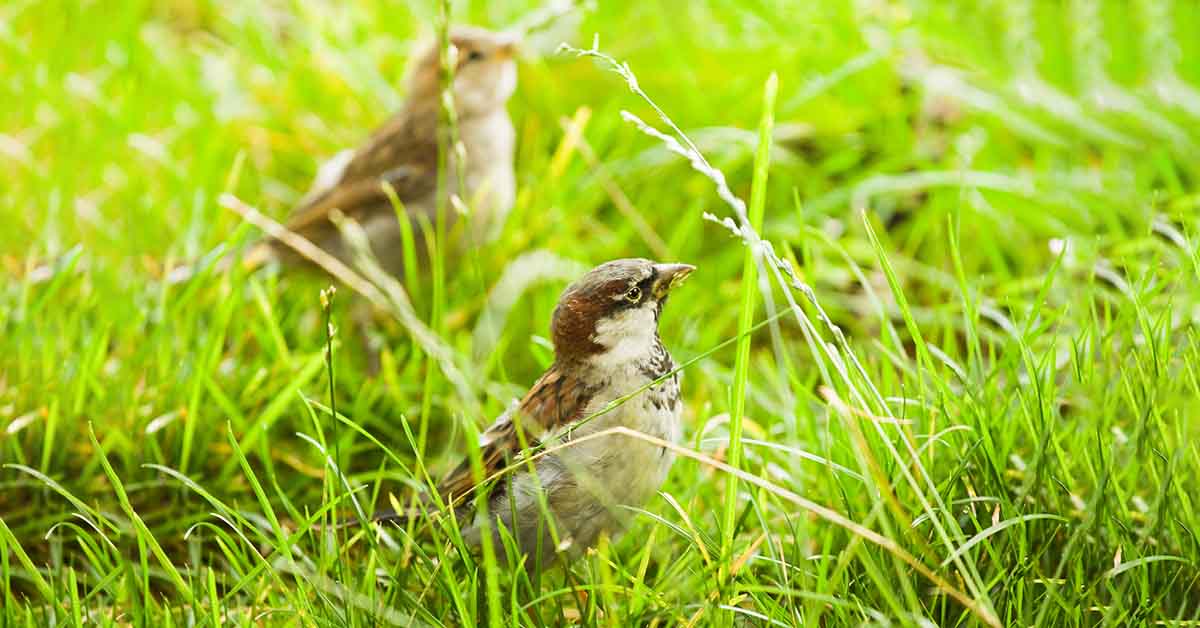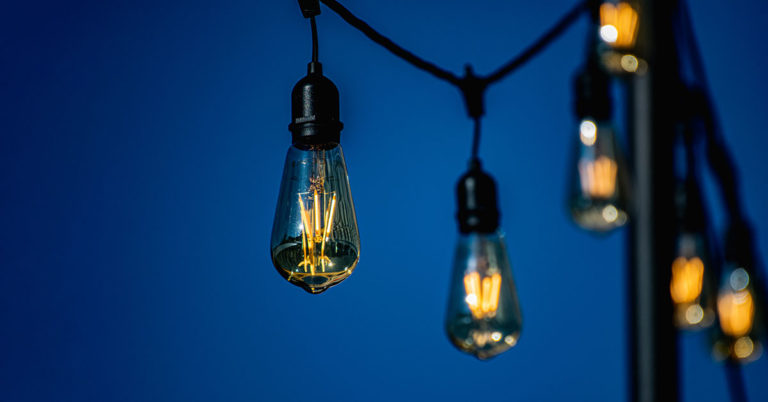How to Keep Birds From Eating Grass Seeds – Tips to Save Your Seed (and Birds)
Sowing grass seeds in your yard can help create a lush green lawn before you know it, but those seeds are also lovely to the birds that visit your property.
If your grass seeds don’t remain in your lawn for a specific time, they’ll fail to grow.
But what to do about all types of birds that love to make a snack out of your seeds?
Believe it or not, you can do some straightforward things to keep the birds from eating your grass seeds. They are also things that won’t harm the birds in any way.
Do Birds Actually Eat Grass Seed?
You hear time and time again that you need to cover your seeds, so the birds don’t eat them.
But is it so?
It looks like it depends. Some species might eat, some might not. Some birds can be very picky about what kind of seeds they eat.
It is still a good idea to cover seeds anyway, just in case.
Birds are still attracted to grass even if they don’t eat grass seed. It might be because moist and tilled-up soil attracts grubs and worms.
In reality, maybe the birds are eating worms that are popping up because we water a lot more when we put grass seeds down, not the seeds.
Anyway, we want to be prepared, so here are a few of the simpler ways to keep birds away:
1. Cover the grass seed with a bird net
One of the things you can do to keep the birds away from your grass seeds is use some type of bird net.
The net prevents them from getting to the seeds in the first place. There are bird nets specifically made to prevent birds from reaching the grass seeds.
2. Mulch the ground
You can use floating seed covers, mulches, and even regular netting, which is usually enough to keep the birds away.
Netting or seed covers usually work best because birds often figure out how to peck through things such as mulch.
3. Put straw over the seed
You may also want to rake the seeds up to an eighth of an inch under the soil, then cover the area with straw.
Make sure it’s a very thin layer of straw, and make sure you get rid of it once the sprouts start to grow. This is because sprouts need sunlight to grow, and leaving the straw on your lawn will prevent the sunlight from getting to them.
Just keep an eye on the seeds and read the manufacturer’s instructions, so you’ll know how long it will be before you see the sprouts.
4. Cover the seed with burlap sheets
If you’re not interested in mulch, netting, or straw, you can cover the grass with sheets made out of burlap.
Burlap sheets are good for many reasons. They don’t blow away like mulch sometimes does and are even good when it’s windy outside.
Make sure you take something such as u-pin wires and anchor the edges of the sheets, so they don’t become disheveled or blow away. Again, once the seeds start to sprout, you’ll need to remove the burlap because the seeds will need sunlight to grow.
What about less conventional methods? If some of the methods mentioned above seem complicated, not to worry.
There are a few other “natural” methods you can try that are a little simpler and can even be considered proactive.
5. Use Fake Owls or Hawks
For instance, like other animals, birds have natural predators. If you use fake predators to deter the birds, they won’t go near your lawn in the first place.
For starters, try using fake hawks or owls near where your lawn is. Even a rubber snake often works because these are all animals that birds naturally try to avoid.
If you choose this method, keep in mind that birds are more intelligent than you think. That means you’ll have to regularly change the fake predator’s position.
If you don’t, the birds can suspect that the predator isn’t natural and react accordingly.
You can even use products to keep the birds off your lawn, including an owl with a rotating head. That should look realistic enough for birds and everyone else who gets near it.

6. Set Up a Decoy Feeder
Decoy feeders are also a good idea. Since birds love to eat seeds, go ahead and set up a prominent bird feeder somewhere near where the grass seeds were just sown.
But don’t put the feeder too close to the lawn. You’ll want to make sure there’s a lot of distance between your lawn and the bird feeder, so the birds will go toward the feeder instead.
The birds will appreciate that bird feeder once they realize they can eat tasty seeds without pecking through the grass. They will gravitate towards it every time they visit your yard.
7. Making Noise and Other Deterrents
Last but not least, some deterrents can scare the birds away and keep them away from your lawn, and they are both easy and inexpensive to accommodate.
First, look for No products found. that work with ultrasonic sounds that the birds can hear but humans cannot.
The good news about these is that they come in many different designs, so choosing one that you think will look good in your yard is a piece of cake.
It is likely that some wind chimes will scare birds away from your property. Birds are more likely to be scared by wind chimes that are larger and make deeper sounds.
8. Reflective scare tape
You can also use reflective scare tape, which is proven to be hated by birds. This is a good quality tape that you can put almost anywhere.
You can stick the tape on poles, walls, or trees, or you can simply throw it on the ground. Wherever you put it, the birds will notice, and they’ll make it a point not to come near your lawn.
Reflective scare tape is also suitable for deterring geese, pigeons, herons, woodpeckers, blackbirds, and many other animals.
It is an inexpensive and easy way to ensure that no birds will come near your lawn and start pecking away at your grass seeds.
9. Plant extra seeds
Of course, if you’re looking for a convenient and straightforward way to save your grass seed, you can always plant an extra seed. If the birds do eat it, you’ll still have enough to grow the lawn.
If you choose this method, try to plant 25% to 30% more grass seed throughout the lawn to make up for the seed eaten by the birds or blown away by the wind. This will also mean you’ll have enough to keep the yard from looking “patchy” once the seed starts to grow.
There are, in fact, numerous ways to prevent birds from eating the grass seeds in your yard. Not only are they practical, but they are also inexpensive and easy to apply to your yard.


